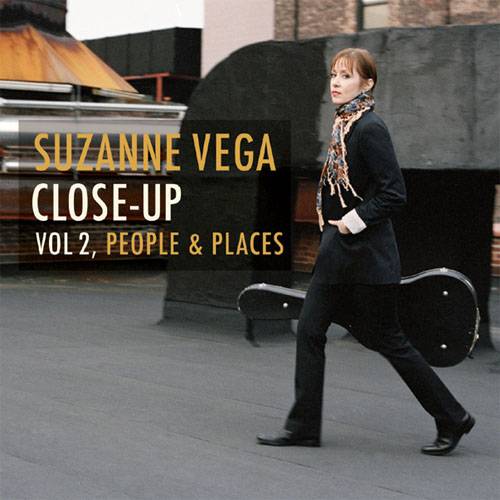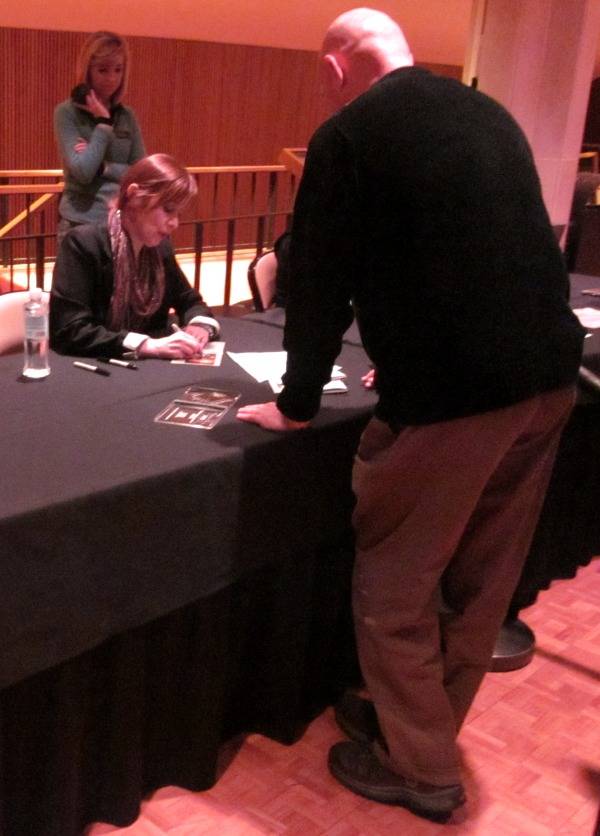During the Clinton years, Suzanne Vega teamed with then-husband Mitchell Froom in leading recorded music to new heights of technical prowess, fidelity and aesthetic warmth.
This hi-fi phase of Vega’s œuvre culminated with Songs in Red and Gray (A&M). Released two weeks after planes-into-buildings, Red and Gray set a new standard for production values.
Intriguingly, Mitchell Froom was nowhere to be seen. Rupert Hine produced. But the album is all about Mitchell Froom. Ironically Songs in Red & Gray is concerned with infidelity and coldness. It’s a divorce album.
That Suzanne Vega could create a work of its grandeur, and do it better without her “studio genius,” stands among the best fillips in the history of petulance.
It sounded great. And for that, according to the webs, she took a lot of shit from her “fans.” By orchestrating her tone poems, by layering sounds, she “sold out.”
Responding to this supposed clamoring, Vega reinvented herself. With a planned four part series of albums, Vega returns to sparse production. Sort of.
She’s re-recording her catalog. Close-Up volumes I & II are out. Their themes are “love songs,” and “people and places,” respectively.
If not the image of her younger self, it’s an imagining of her younger self. And why not? She still looks great. She’s still nimble and witty.
But the sonic truth is that a singer with a guitar does not sound as good as a singer backed by technical jiggery-pokery.
Vega compromised.
The Close-Up are just her and a guitar, asterisk. The live shows supporting the new albums follow that formula.
The live asterisk is Gerry Leonard, the affable Irish guitar virtuoso for whom the term “journeyman” was coined.
In Urbana Friday night, Leonard’s discreet, discrete injections of rhythm and counterpoint carried Vega from theorem to proof.
In most cases, his picking and fretting buttressed her acoustic strum. But in plenty of songs, Leonard added loops (instantaneously recorded, briefly stored and continuously played passages) of guitar. Combined with chorus pedal and digital delay, there were moments when Leonard provided musical backdrop enough for an entire band.
Somehow, he managed to avoid outshining Vega in all but a few spots.
After the show, Gerry confirmed that he’ll add the soft lighting and négligée to future Vega Nudes. He says the third Close-Up, scheduled for a May release, will re-work Vega’s “mental health” – oriented songs.

When Red and Gray “failed” to electrify bar code scanners at malls across America, the increasingly nü metal and rap-focused Interscope Group — the modern, edgy name Universal adopted for subsidiary labels within its marketing umbrella — dropped Vega. Not a surprise, considering Interscope closed A&M’s doors and fired the staff in 1999.
After 17 years as a major-label recording artist, perhaps Vega felt personally spurned. Maybe that, more than fan complaints, provoked her strip-down.
Her new records are self-released (although she’s sufficiently old-school to have created a label for herself). It’s damn-near free to make pretty-good-sounding records. It’s still hugely expensive to make great-sounding records.
A happy consequence is that she can sell copies directly to fans, and not pay recoupables to some faceless monolith.
 Suzanne Vega autographs a copy of Close-Up at the Krannert Center lobby on Friday evening, April 1st 2011 in Urbana, not Champaign, Illinois.
Suzanne Vega autographs a copy of Close-Up at the Krannert Center lobby on Friday evening, April 1st 2011 in Urbana, not Champaign, Illinois.
Red and Gray was the first Vega album to feature Gerry Leonard. He’s been a feature ever since. I suspect those songs will show up in May, possibly providing Leonard’s greatest challenge for filling a soundscape.
The last two songs from Urbana’s performance come from Vega’s newest endeavor, a one-woman theatrical play she wrote, based on the life and work of Carson McCullers titled “Carson McCullers Talks About Love.” The music was composed by Duncan Shiek. The song about Harper Lee allows Vega to return vicariously to her best voice, petulant.
I predict a Tony nomination.








